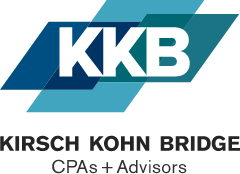Insights
Data Visualization: A Picture is Worth 1,000 Words
October 29th, 2021/Advisory
Graphs, performance dashboards and other visual aids can help managers, investors and lenders digest complex financial information. Likewise, auditors also use visual aids during a financial statement audit to quickly identify trends and anomalies that warrant attention.
Powerful tool
Your auditor uses many tools and techniques to validate the accuracy and integrity of your company’s financial records. Data visualization — using a picture to show a relationship between two accounts or how a metric has changed over time — can help improve the efficiency and effectiveness of your audit.
Microsoft Excel and other dedicated data visualization software solutions can be used to generate various graphs and charts that facilitate audit planning. These tools can also help managers and executives understand the nature of the auditor’s testing and inquiry procedures — and provide insight into potential threats and opportunities.
4 Examples
Here are four examples of how auditors might use visualization to leverage your company’s data:
1. Employee activity in the accounting department. Line graphs and pie charts can help auditors analyze the number, timing and value of journal entries completed by each employee in your accounting department. Such analysis may uncover an unfair allocation of work in the department — or employee involvement in adjusting entries outside of their assigned area of responsibility. Managers can then use these tools to reassign work in the accounting department, pursue a fraud investigation or improve internal controls.
2. Activity in accounts prone to fraud and abuse. Auditors closely monitor certain high-risk accounts for fraud and errors. For example, data visualization can shine a spotlight on the timing and magnitude of refunds and discounts, highlight employees involved in each transaction and potentially uncover anomalies for additional scrutiny.
3. Journal entries prior to the end of the accounting period. Auditors analyze and confirm the timing and magnitude of your journal entries leading up to a month-end or year-end close. Timeline charts and other data visualization tools can help auditors understand trends in your company’s activity during a month, quarter or year.
4. Forecast vs. actual. Line graphs and bar charts can show how your company’s actual performance compares to budgets and forecasts. This can help confirm that you’re on track to meet your goals for the period. Conversely, these tools can also uncover significant deviations that require further analysis to determine whether the cause is internal (for instance, fraud or inefficiency) or external (for instance, cost increases or deteriorating market conditions). In some cases, management will need to revise budgets based on the findings of this analysis — and potentially take corrective measures.
Show and tell
Data visualization allows your data to talk. Auditors use these tools to better understand your operations and guide their risk assessment, inquiries and testing procedures. They also use visual aids to explain complex matters and highlight trends and anomalies to management during the audit process. Some graphs and charts can even be added to financial statement disclosures to communicate more effectively with stakeholders. Contact us for more information about using data visualization in your audit and beyond.
© 2021
TAGS: Advisory


